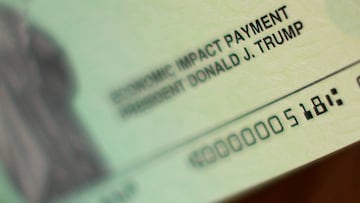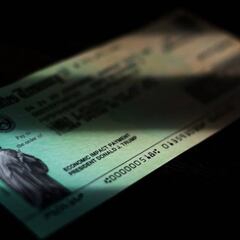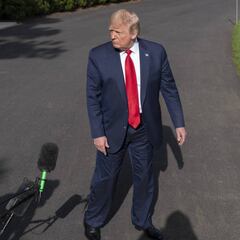US coronavirus stimulus checks: What's 'helicopter money'?
As part of the Coronavirus Aid, Relief, and Economic Security Act, 150 million stimulus checks are expected to be distributed in the United States.

What does the term ‘helicopter money’ mean?
The term ‘helicopter money’ refers to an idea put forward by the Nobel Prize-winning economist Milton Friedman in a 1969 paper entitled “The Optimum Quantity of Money”, in which he proposes handing out cash to the public as a means of kick-starting a country's flagging economy.
In the paper, Friedman wrote: “Let us suppose now that one day a helicopter flies over this community and drops an additional $1,000 in bills from the sky, which is, of course, hastily collected by members of the community. Let us suppose further that everyone is convinced that this is a unique event which will never be repeated.”
Writing for the World Economic Forum, Pieria Magazine editor and co-founder Tomas Hirst explains: ”The basic principle is that if a central bank wants to raise inflation and output in an economy that is running substantially below potential, one of the most effective tools would be simply to give everyone direct money transfers.
“In theory, people would see this as a permanent one-off expansion of the amount of money in circulation and would then start to spend more freely, increasing broader economic activity and pushing inflation back up to the central bank’s target.”
‘Helicopter money’ and the US stimulus package
As part of the 2.2-trillion-dollar bill known as the Coronavirus Aid, Relief, and Economic Security (CARES) Act, millions of eligible US residents have been receiving 1,200-dollar stimulus checks to help them cope with the financial effects of the Covid-19 crisis in the States, where unemployment has rocketed in recent weeks.
As of Friday, 157.9 billion dollars had been paid out in 88.1 million checks, with a total of 150 million non-taxable checks expected to be given out by the end of the scheme.
As a result of the cash injections being received by people in the US, the term ‘helicopter money’ has become a feature of the current financial conversation.
Amid calls for Donald Trump’s administration to offer financial aid that goes further than the CARES Act, for example, Anthony Scaramucci, a hedge-fund investor who was briefly the president’s communications chief, urged the federal government to “put up more ‘helicopter money’” in an interview with CNBC in April.
‘Helicopter money’ “is not what has been approved in the United States”
When it comes to the use of ‘helicopter money’ in this context, though, Ignacio González García, an economy professor at the Washington DC-based American University, has explained in an interview with the Huffington Post that the key tenets of Friedman's idea do not quite apply to the funds being received by people in the US.
“The expression 'helicopter money' has traditionally been used to refer to new money printed by a central bank and distributed directly to the citizens," he said. "This is not what has been approved in the United States, where we have the federal government handing out these checks and using tax resources to pay them.”
More US stimulus checks mooted
Related stories
A second round of checks has been proposed in the US House of Representatives, with Democratic members looking to push through a new bill, called the Emergency Money for the People Act, which would provide eligible American residents with monthly checks of 2,000 dollars for at least six months.
See also:
Live coverage of the coronavirus pandemic
You can follow live coverage of the coronavirus crisis with our daily live blog. We also have dedicated rolling feeds for the United States, India and Africa.

